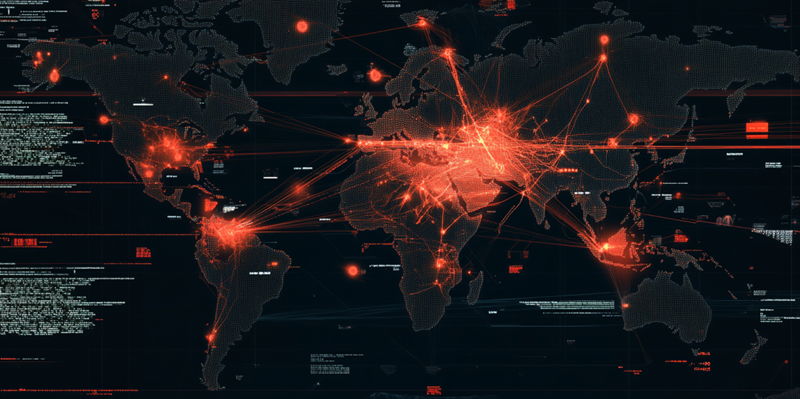In a rapidly evolving digital landscape, the alarming rise in Distributed Denial of Service (DDoS) attacks has emerged as a profound challenge, putting organizations on high alert. Data from Cloudflare indicates a dramatic surge in both the size and frequency of these attacks since the start of 2024. Over 14.5 million DDoS attacks have been mitigated by Cloudflare alone, averaging about 2,200 attacks per hour. These statistics reveal that DDoS attacks have not only become more common but also significantly more powerful over the past decade.
Rising Magnitude and Frequency of DDoS Attacks
The exponential growth observed in DDoS attack metrics paints a stark picture of the current cybersecurity landscape. In terms of bits per second (bps), the attack rates have skyrocketed from 309 Gbps in 2013 to an unprecedented 5.6 Tbps in 2024. The number of packets per second (pps) has also seen a massive increase, jumping from 230 million pps in 2015 to 2.1 billion pps in 2024. Similarly, requests per second (rps) rates have surged from 6 million rps in 2020 to a staggering 201 million rps by September 2024. These figures illustrate the immense scale and power that modern DDoS attacks can harness, creating significant challenges for traditional defense mechanisms.
The shift in attack magnitude is largely attributed to three primary factors. Firstly, attackers have transitioned from using Internet of Things (IoT)-based botnets to more potent Virtual Machine (VM)-based botnets. These VM-based botnets possess superior computational capabilities, enabling them to generate higher volumes of traffic. Secondly, attackers are exploiting cloud resources with anonymized access and stolen payment details, enhancing their ability to execute large-scale attacks. Lastly, the development of advanced attack techniques, such as the HTTP/2 Rapid Reset attack, has enabled attackers to generate unprecedented request volumes, thereby increasing the complexity and effectiveness of their efforts.
Challenges Posed by Escalating DDoS Attacks
The increasing scale and sophistication of DDoS attacks present multiple challenges that organizations must address to safeguard their digital infrastructure. One of the most pressing concerns is the heightened vulnerability posed by these attacks. Outdated defense mechanisms may no longer be effective in mitigating the enhanced power and complexity of contemporary DDoS attacks. Hence, there is an urgent need for organizations to upgrade their cybersecurity measures and invest in more advanced, scalable protection systems.
The economic repercussions of service disruptions due to DDoS attacks cannot be overstated. Businesses face the risk of substantial financial losses as service outages can disrupt operations, damage brand reputation, and erode customer trust. The evolving threat landscape necessitates constant adaptation and innovation in cybersecurity strategies, ensuring that digital assets remain secure and service availability is maintained. Traditional DDoS mitigation strategies may fall short in the face of such advanced attacks, highlighting the importance of adopting robust, automated defense systems.
Necessity for Advanced Cybersecurity Measures
In the rapidly changing digital environment, the significant increase in Distributed Denial of Service (DDoS) attacks has become a serious concern, causing organizations to remain vigilant. According to data from Cloudflare, there has been a notable rise in both the size and frequency of these attacks starting in 2024. Cloudflare alone has managed to mitigate over 14.5 million DDoS attacks, averaging about 2,200 attacks per hour. These alarming statistics indicate that DDoS attacks have not only become more prevalent but have also grown considerably in strength over the past decade.
The evolution of these cyber threats has put immense pressure on companies to enhance their security measures. Businesses now need to invest more resources into developing robust cybersecurity strategies, ensuring they can protect their infrastructure from these increasingly sophisticated and frequent attacks. The rise of DDoS attacks underscores a clear imperative for improved defensive measures and greater awareness among organizations to adapt to this growing cyber threat landscape.

